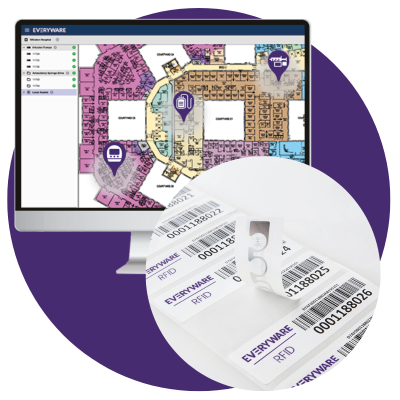Radio Frequency Identification, or RFID, is a technology extensive used in healthcare asset tracking. It operates using radio waves to communicate between a tag, which is attached to the asset, and a reader device.
‘Passive’ or battery-less RFID tags are commonly chosen due to their low cost battery free operation.
Operating without a power source, passive RFID tags derive energy from radio-frequency waves emitted by an RFID reader. These waves activate the tag’s integrated circuit (IC), prompting it to transmit a response signal back to the RFID system. The RFID reader must be in close proximity to the RFID tag (usually around 10ft/3m). The technology is conceptually similar to barcode scanning, with some advantages such as RFID tags holding more data.
Due to their low cost and limitations, there are specific scenarios where passive RFID tags are the best option. An example could be when a large number of assets require low-cost tracking, and only need to be scanned when returning to a store room.
This solution does not work for assets that need to be tracked in real time, or that aren’t in close proximity to an RFID reader. Kitting an entire hospital out with RFID readers would be significantly less cost efficient and effective than utilising an RTLS.

Share your details and a member of our team will be in touch to provide a quote and information about our free demo.
Email: info@everyware.co.uk
Head Office
Chandos Business Centre, 87A Warwick Street, Leamington Spa, Warwickshire, CV32 4RJ, United Kingdom